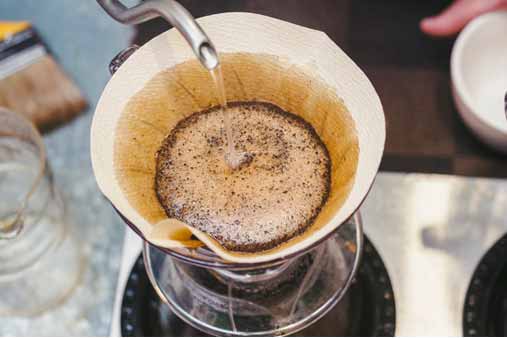Finding the Right Location for Your Specialty Cafe
Finding a location for your specialty coffee shop informs all other decisions you will make regarding your new cafe — from what equipment to buy to which products to serve. Should you set up your business location in a suburban shopping center surrounded by residential neighborhoods, or in an urban area that sees steady foot traffic?
This guide, written by coffee professionals, will go over everything you should consider when choosing a location for your cafe: cost of rent, finding your target demographic, figuring out how many square feet you'll need, and more.
Recommended: Read our full, in-depth How to Start a Coffee Shop Business guides, inspired by coffee professionals, they will help make your coffee dreams real, from sourcing beans to hiring baristas, forming an actual company, and everything in between.

3 Easy Steps to Help you Choose the Best Cafe Location
Step 1: Find the Right Neighborhood
What kind of customer base do you want to attract? Your target customers’ location and preferences will inform what will make your business successful.
Here are some common examples:
- Downtown/Business-Centric Neighborhoods: Depending on the surrounding businesses, setting up shop in this type of area can mean busy weekdays and slow weekends. Drip coffee is a big seller in these neighborhoods because it’s fast, cheap, and accessible. Because you’ll likely compete with established companies, such as Starbucks®, differentiation is key. Carrying local, artisan, or handmade syrups and pastries can give your shop a competitive edge.
- Family-Friendly Neighborhoods: Because these areas typically include businesses catering to the needs of families, you’ll likely see slower weekdays and busy weekends. Your cafe’s atmosphere and offerings should reflect the needs of this customer base, such as by providing a range of comfortable places to sit, baby changing tables, interesting specialty drinks, and kid-friendly food options. By prioritizing these aspects of your business, you will encourage families to return.
- Trendy/Culinary Neighborhoods: Manual-brew methods and specialty products help cafes in these areas thrive because this customer base seeks a memorable experience. Like patrons of bars featuring craft cocktails, these customers value the quality of their experience and will pay more for it than customers who simply want to grab a coffee and go. Attracting customers in these neighborhoods requires a high-quality approach to not only the coffee you serve, but also your food, tea, and syrup offerings.
- Tourist Neighborhoods: Areas with high tourism also provide opportunities for a successful coffee shop. The key is to find the places that attract the most tourists and then create a resting place nearby. Offering souvenirs, products made with local ingredients, and a unique customer experience are just a few ways to thrive in these areas. You may, however, face several challenges in these neighborhoods, such as seasonal slumps during times of the year with lower tourism and fewer repeat customers if your cafe is off the beaten path for locals.
Pro Tip: A unique location can help draw crowds to your coffee shop. A good example of this is Tabor Space in Portland, Ore. This former church lures people in with its unique ambiance and then keeps them coming back for its great coffee.
Step 2: Think About Your Budget
Specialty coffee shops can succeed in many locations — even outside upscale neighborhoods.
If you’re on a tight budget, scout for space in areas with multiple standalone restaurants, bars, and shops. Busy areas on the verge of popularity often have cheaper rents for retail space, helping to reduce your start-up costs.
If you prefer to invest in a pricier location, look for a heavily populated area that lacks a cafe or specialty coffee shop. This approach provides a built-in customer base to help offset the higher rental costs, giving you a better chance of early success.
While rents can vary dramatically depending on your location, here are a few examples of what to expect when scouting locations in a large metropolitan area, a mid-sized city, or a rural town:
- San Francisco, Calif.: Commercial restaurant space in the popular Mission District can run about $144 per square foot per year while rents in less-busy areas can still be around $30 per square foot per year.
- Dallas, Texas: In this mid-sized city, restaurant space can run as low as $10 per square foot per year — even in high-traffic areas like downtown.
- Ashland, Ore.: In smaller, rural towns such as Ashland, commercial restaurant space can still run a bit high at around $20 per square foot per year. However, these towns often leave plenty of room for development in areas not yet popular so you can find lower rents if you get creative with your cafe placement.
Recommeded: While leasing a location is an ongoing cost, you'll also want to consider the cost of renovation, and Designing the Perfect Floor Plan for your Cafe.
Step 3: Consider Your Roasting Needs
If you plan to roast your own beans in addition to operating a coffee shop, you must consider several other factors in your location search. For example, you must assess not only the physical space, but also potential neighborhood concerns like smoke emissions and access to power.
Thinking about becoming a roaster? Check out our How to Start a Coffee Roasting Business Idea
Here’s what to look for across three common roasting options:
- Standalone Roastery: You can often find suitable space for your own roasting facility in industrial zones. Look for areas that house breweries, warehouses, and product manufacturing facilities. These zones often are more tolerant of any emissions and sounds coming from your roastery than a typical neighborhood.
- Community Roastery: Another option is to join a shared roasting space. Similar to a community kitchen, this is a space you can reserve, as needed, to roast your coffee without the expense of investing in your own space and equipment. The main downside of this approach is not having a space available to use at any time. But this may not pose a huge challenge if you plan to have a small roasting operation (i.e., roasting beans for your own shop and/or only a few others). When evaluating membership in a community roastery, be sure to ask about their scheduling availability, membership perks, and fees.
- Roastery and Cafe: A combined roastery and cafe space can be a great option because it creates an engaging customer experience. However, you need a bit of separation between the roastery and cafe space to make this option work well. Look for a space that includes some sort of physical barrier, such as sliding doors or a wall with large windows, so you can minimize the impact of roasting smells, sounds, and smoke on your cafe. Two good examples of this approach include Publik Coffee in Salt Lake City, Utah, and Caffe Umbria in Chicago, Illinois.
Pro Tip: Get to know your neighbors. Building strong relationships with neighboring businesses can help drive customer traffic as you start out. For example, ask local restaurants to direct waiting customers to your cafe while they wait for a table.
Wrapping Up
Finding and getting into a location is only one part of Planning a Coffee Shop, read our guide to find out more about everything else that goes into a business plan, like how to get funding and more.

